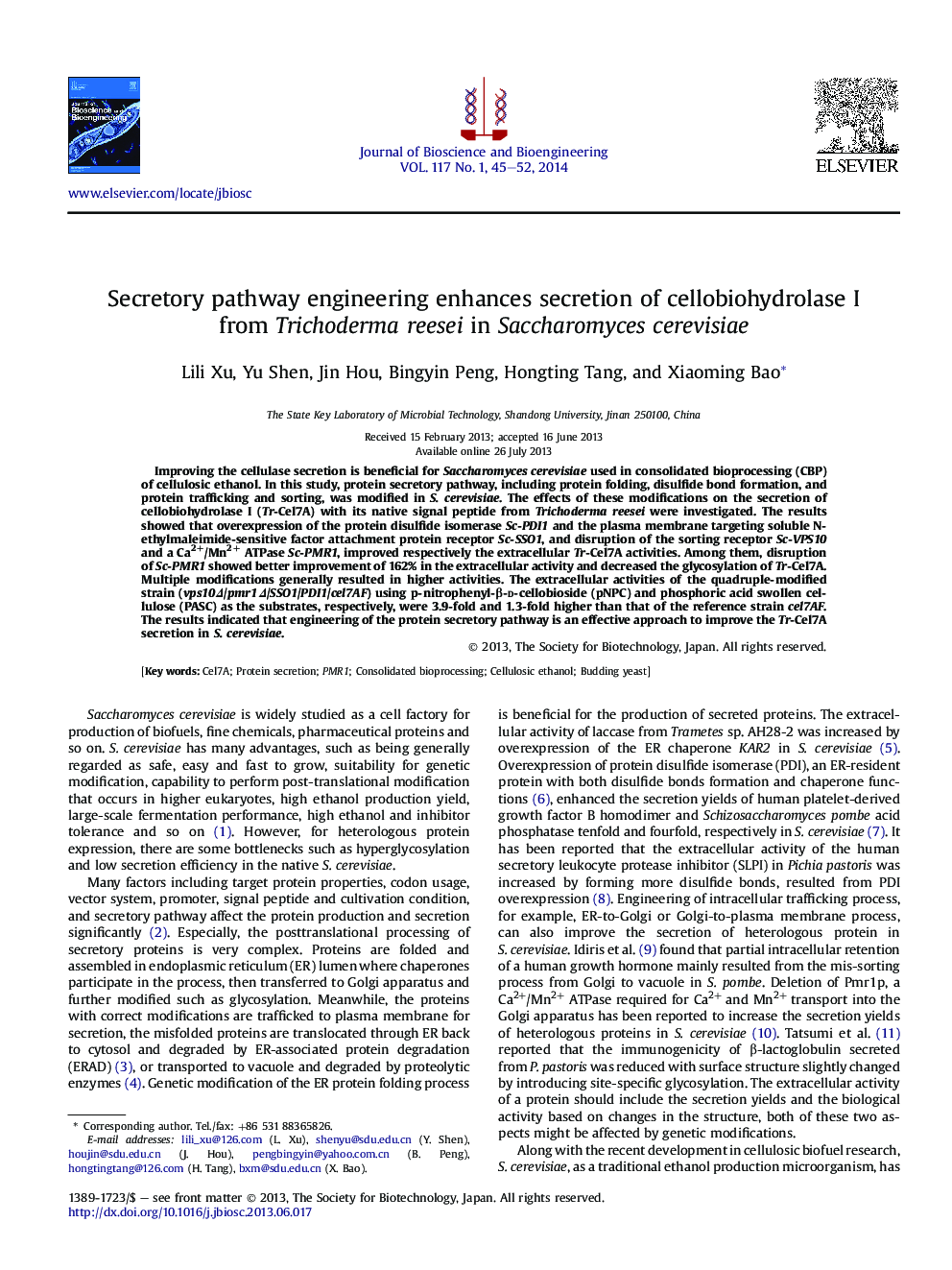| Article ID | Journal | Published Year | Pages | File Type |
|---|---|---|---|---|
| 20426 | Journal of Bioscience and Bioengineering | 2014 | 8 Pages |
•Engineering the protein secretory pathway improved the Cel7A secretion in yeast.•PDI1, SSO1, VPS10 and PMR1 genes were single and multiple modified, respectively.•PMR1 deletion was more important than the other detected factors for Cel7A secretion.•vps10Δ/pmr1Δ/SSO1/PDI1 exhibited the significant enhancement on the Cel7A secretion.•The modifications did not improve the secretion of endogenous invertase apparently.
Improving the cellulase secretion is beneficial for Saccharomyces cerevisiae used in consolidated bioprocessing (CBP) of cellulosic ethanol. In this study, protein secretory pathway, including protein folding, disulfide bond formation, and protein trafficking and sorting, was modified in S. cerevisiae. The effects of these modifications on the secretion of cellobiohydrolase I (Tr-Cel7A) with its native signal peptide from Trichoderma reesei were investigated. The results showed that overexpression of the protein disulfide isomerase Sc-PDI1 and the plasma membrane targeting soluble N-ethylmaleimide-sensitive factor attachment protein receptor Sc-SSO1, and disruption of the sorting receptor Sc-VPS10 and a Ca2+/Mn2+ ATPase Sc-PMR1, improved respectively the extracellular Tr-Cel7A activities. Among them, disruption of Sc-PMR1 showed better improvement of 162% in the extracellular activity and decreased the glycosylation of Tr-Cel7A. Multiple modifications generally resulted in higher activities. The extracellular activities of the quadruple-modified strain (vps10Δ/pmr1Δ/SSO1/PDI1/cel7AF) using p-nitrophenyl-β-d-cellobioside (pNPC) and phosphoric acid swollen cellulose (PASC) as the substrates, respectively, were 3.9-fold and 1.3-fold higher than that of the reference strain cel7AF. The results indicated that engineering of the protein secretory pathway is an effective approach to improve the Tr-Cel7A secretion in S. cerevisiae.
